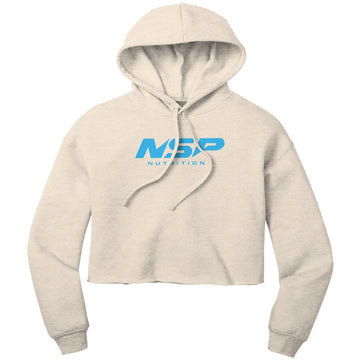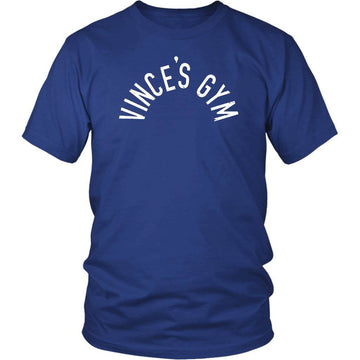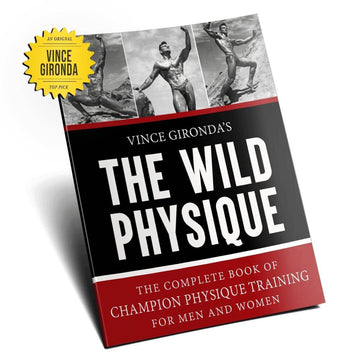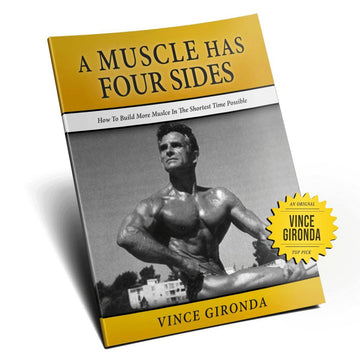
A thick, well-defined back is one of the best indicators of someone who knows his stuff and puts in real work at the gym.
I’m sure you’ve heard someone say; ‘Put your back into it!’
When people say this, they’re trying to motivate you to do better or work harder, but have you ever wondered why it’s your back and not say… your foot?
Some may argue that it doesn’t sound as good, but the truth is that back muscles are essential for any physical activity, and having good ones can make any of these activities much easier.
Today, we’re going to be letting you in on the 5 exercises for a stronger back you can use to get a stronger, more aesthetically pleasing back in time for summer.
5. Pendlay Rows
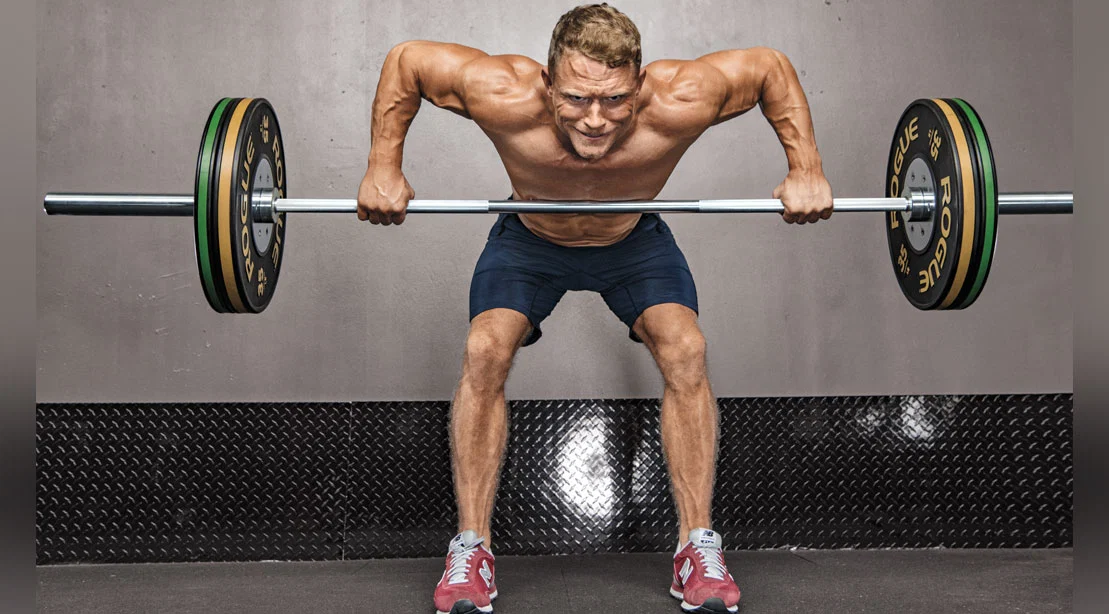
Glenn Pendlay, an Olympic weightlifting coach and former powerlifter created this specific, effective way of working your upper and lower back muscles.
His invention is a modification of the Barbell row, another back exercise which is on this list.
Pendlay passed away in 2019 after battling cancer but his technique is still used by people today to build a stronger, wider back.
The Pendlay row is a bodybuilding exercise that helps activate muscle groups throughout your body such as your rhomboids, biceps, glutes, and even hamstrings.
Pendlay rows are great for working your entire back, as they hit all the sweet spots in your upper and lower back as well.
From your erector spinae and lower back, all the way up to your trapezoids are sure of a good, hard-hitting workout with this.
If you are currently hitting a plateau with exercises like the deadlift and other squats, Pendlay rows will definitely help you break through and make massive progress.
How to Do A Pendlay Row.
- Walk up to your loaded bar and spread your feet apart by shoulder width. Place the bar midway on your foot.
- Get into position by bending forward with your hands outside of shoulder distance and grab the bar.
- Slightly bend your knees and push your hips back until you feel your hamstrings activate (A tight feeling in your hammies).
- Keep your back straight, and in one quick movement, bring the bar up to your chest in an explosive manner.
- Make sure you bring your elbows up high enough so that the bar touches your lower chest.
Tips For This Exercise
- The range of motions for a pendlay row resembles a bench press, especially on the way up but in reverse so working on your bench form can greatly help you get the best out of this exercise.
Benefits of this exercise.
- Explosive Back Power
Pendlay rows don’t focus on the eccentric contraction on the way down as you drop the bar.
Using Pendlay rows on the way down, you let gravity do most of the work of you, only focusing on exploding the weight back up, really focusing and digging into that concentric contraction.
- Lower back and upper back workout.
Unlike the barbell row which mostly focuses on just your lower back muscles, the Pendlay Row helps you engage your upper lats due to it longer range of motions on the way up.
In other words, concentric workout plus eccentric exercises give a more well-rounded back workout.
4. Tripod Dumbbell Rows

The Deadstop DB row is another exercise you can do and should be doing if you’re looking to build a bigger, better back.
This exercise targets your lats and is a great way of adding definition to your size oriented back workouts.
How to Do A Tripod DB Row
- The dumbbell for this exercise you need a tripod which acts as your elevated support.
You can also use a bench for this workout, whichever one is your preference or readily available at the time.
- While maintaining a neutral back postion, grab the dumbbell while using the other one to support your weight and maintain balance.
- Keep your knees slightly doubled up and spread apart.
- Make sure your grip on the dumbbell is firm, and now lift the dumbbell swiftly while keeping your elbows square.
- After every pull be sure to stretch your arms as you drop the dumbbell back towards the floor.
Tips for this exercise
- Keep your elbows square to get the most out of the exercise.
- Be mindful of hip rotation of any kind; your goal is to work your lats and you can’t do this very well with any form of hip rotation.
- Pretend like you’re starting a faulty lawnmower; imagining this will help you perfect the sequence of action.
Benefits of this exercise
- This exercise helps you with back muscle definition
3. Straight Arm Pushdowns/ Lat Pushdowns
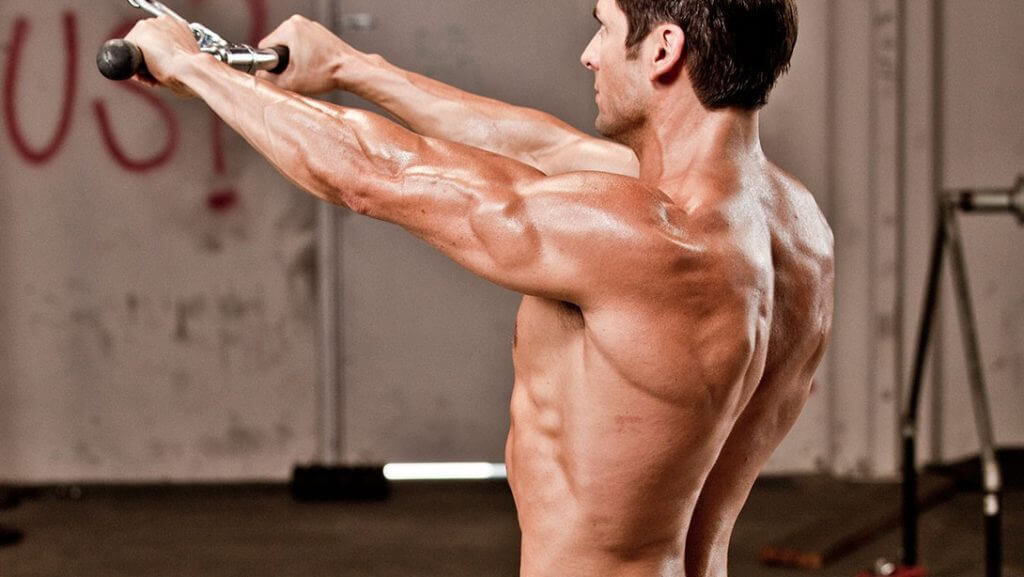
This exercise is a great way of engaging your lats, focusing on the adduction function of the lats as they work to pull your arms towards your body.
This exercise is done using a cable fly machine.
How to Do A Straight Arm Pushdown
- Grab the pulley/bar and step back a few feet
- Slightly bend your torso at the waist at an angle of 30 degrees
- Slightly bend your elbows and extend your arms. You can put some more distance between yourself and the bar to achieve this.
- Tighten your lats, breathe out and pull the bar straight by contracting your lats.
- Pull the bar until your arms touch the inside of your thighs.
- While keeping your arms straight, return to the starting position while breathing in.
- Repeat this process for as many times as you can.
Tips For This Exercise
- Keep your elbows straight; this way you focus on your lats and prevent intervention from unwanted muscle groups such as the triceps and biceps.
2. Seated Cable Rows
The seated cable row is another exercise you perform using a cable fly machine and is great for your back.
The seated cable row allows you to isolate other muscle groups and maintain eccentric focus on your back giving it a great workout.
How To Do A Seated Cable Row.
- Sit on the bench with your knees bent slightly and grab the cable attachment firmly .
- Position yourself so that you have to reach to grab the handle with outstretched arms yet without doubling your lower back over.
- Tighten up your core and you're ready to begin.
- Pull the handle and weight back towards your lower abs.
- As you do so, try not to use too much momentum by moving the torso backward with your arms.
- Target your middle to upper back by keeping your back straight and pressing your shoulder blades together as you row with your chest out.
- Return the handle forward under tension to full stretch while keeping your back straight
Tips for this exercise
- Ensure your lower back is in a straight, firm position as you lean forward. round your back
- Go for the V-shaped handle instead of the wider curved handle.
The V-shaped handle targets your inner back muscles such as your rhomboids and mid traps while the wider handle targets your lower deltoids.
- Return the weight in a slow, controlled manner. Make sure not to crash it.
Tips for this exercise
- Ensure your lower back is in a straight, firm position as you lean forward. round your back
- Go for the V shaped handle instead of the wider one as using the wider handle can extend your arms more causing your lower deltoids to get involved.
1. Barbell Rows

The barbell row is one of the best exercises for building a wider, thicker back.
The reason being that this exercise is capable of working a majority of your back muscles if done properly.
The lats, the middle and lower trapezius, and the rear delts are the muscles that get the most out of the barbell row exercise.
How to Perform A Barbell Row.
- Get your feet into position by planting them slightly wider than the hip width but narrower than the width of your shoulders.
Make sure the bar is directly over your mid foot as you stare down the bar from above.
- Grip the bar just slightly outside your knees. You can use a narrow grip or a wide grip for this exercise.
- Deadlift the weight into a standing position while keeping your back neutral.
- Push your hips back while slightly bending your knees as you lower the bar.
- Stop your descent when you feel your hamstrings’ limitation is preventing you from descending any further without rounding your back.
- Contract your abs and row the weight up by driving your elbows up and slightly back until the bar touches your torso.
- Squeeze your shoulder blades together as you row up.
- Once you've completed your row, keep your core engaged as you maintain your hip position as you bring the weight back down until your arms are straight.
- Let your scapula protract outwards instead of keeping them together.
- Contract your triceps to reduce biceps involvement and maximize back muscle engagement.
- Repeat the process.
Tips for this exercise
- Avoid getting too low and past the range of your hamstrings flexibility.
As you lower the bar as this makes you round your back in the process and place a large amount of stress on your lower back.
- Avoid rounding your back as your row. Keep your chest up and your abs engaged to maintain a neutral back.






